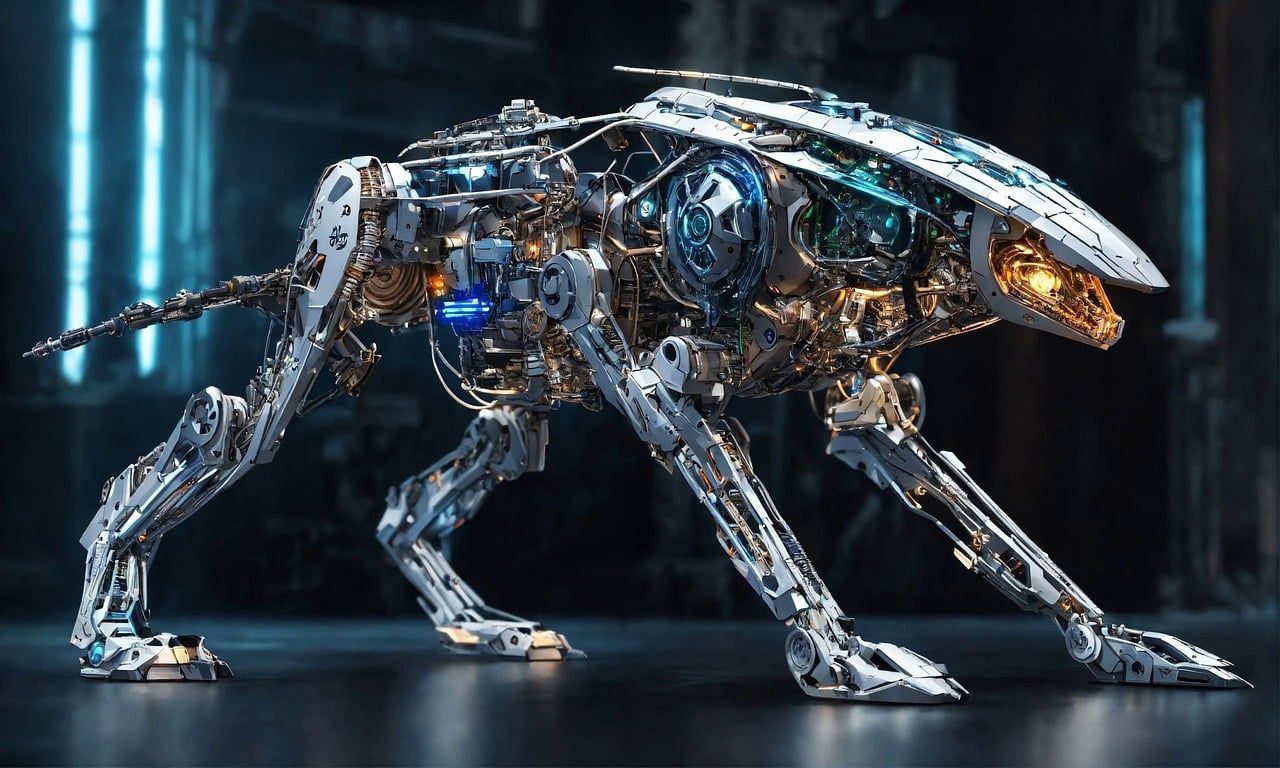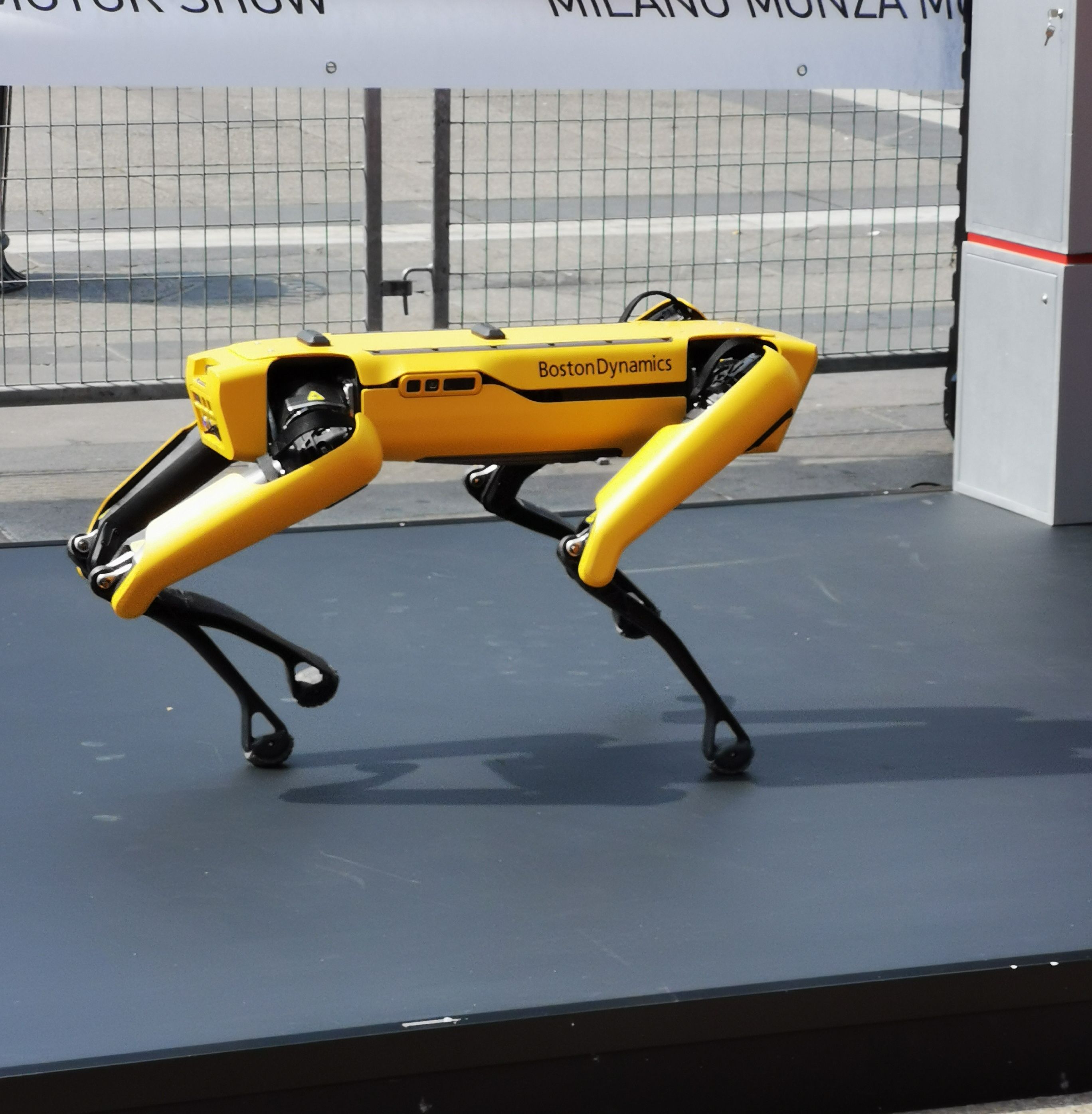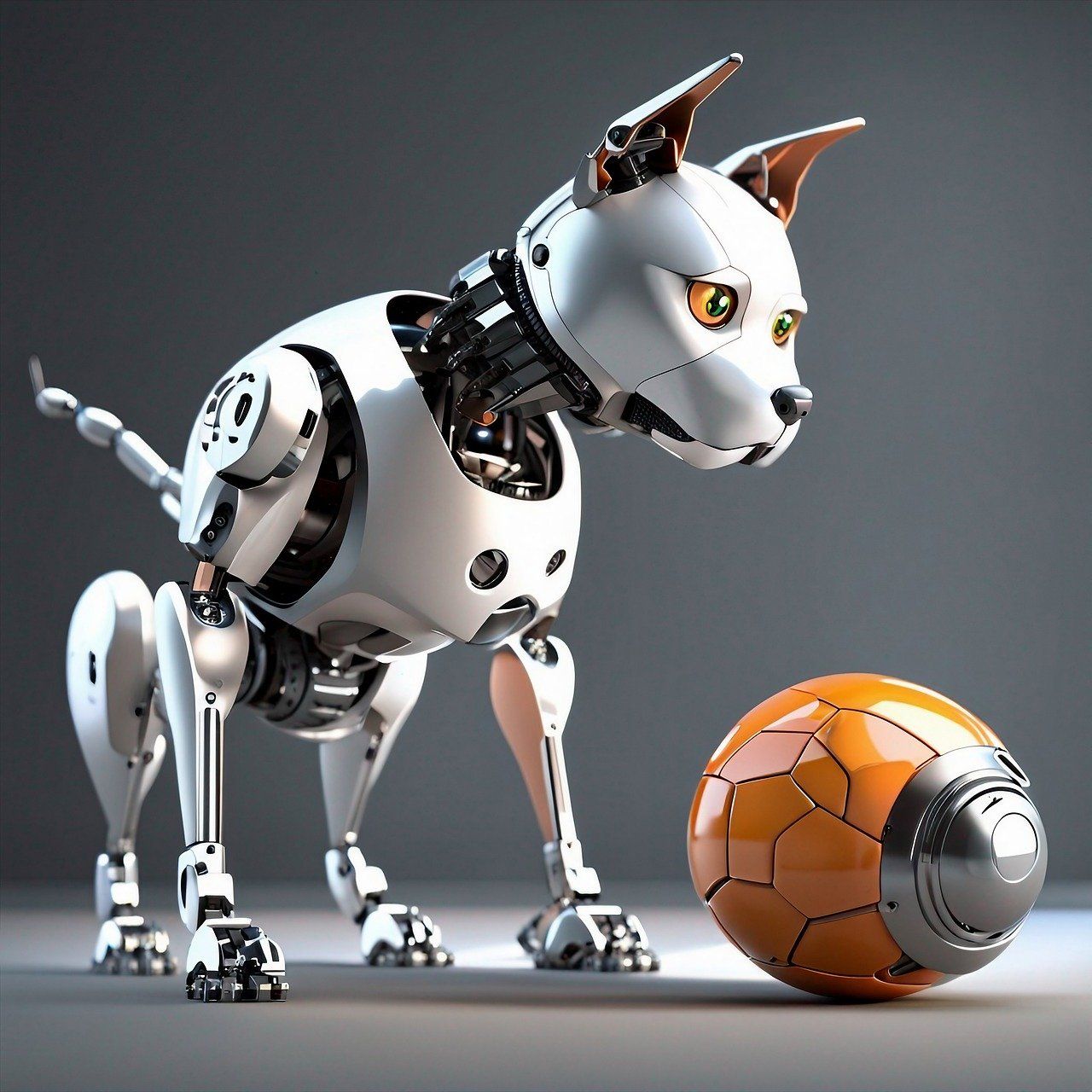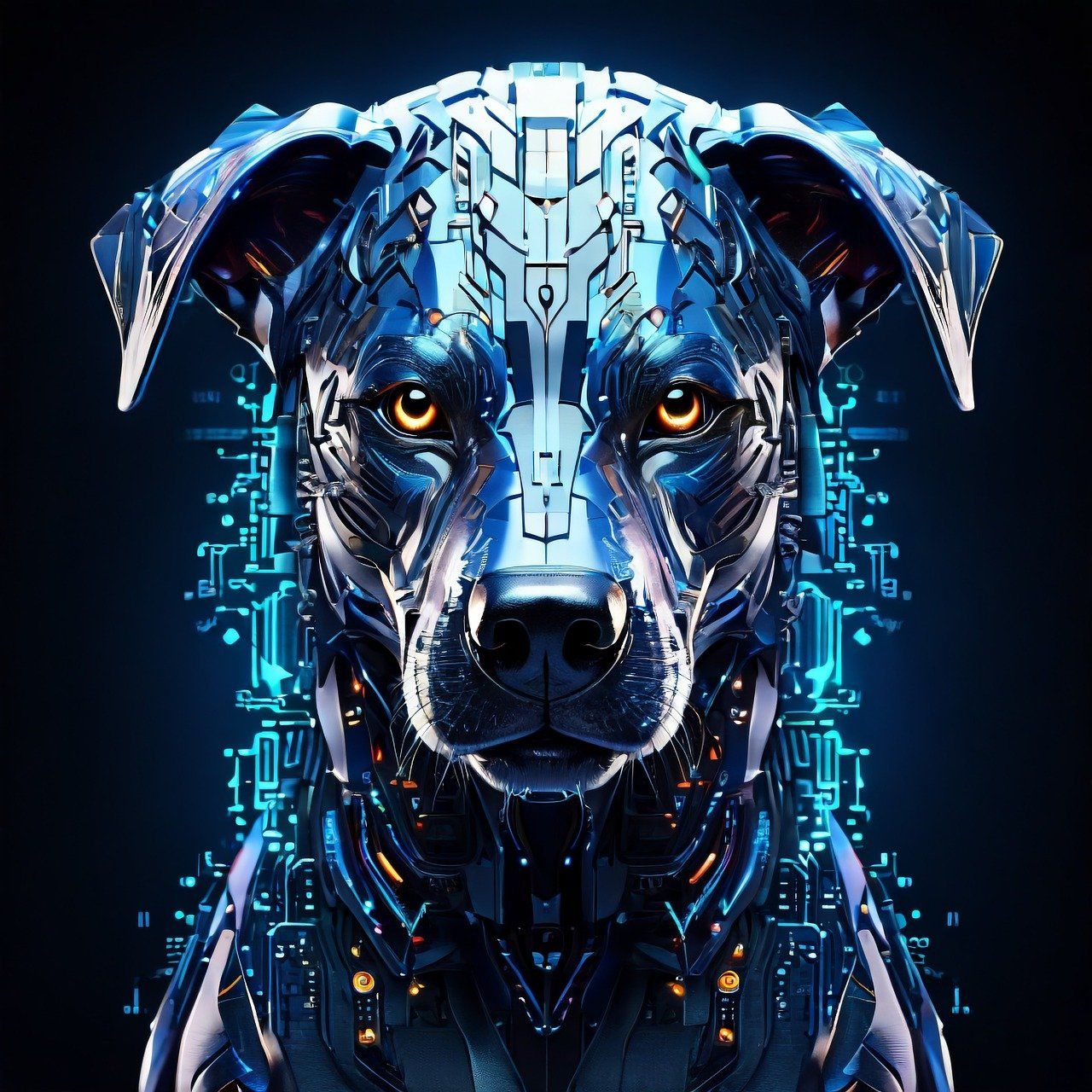Imagine a futuristic world where man's best friend is not just a loyal pup, but a capable robot designed to resemble our canine companions in appearance and behavior. Robotic dogs, or "robodogs" for short, are exactly that, advanced robots that mimic the movements, sounds, and even some behaviors of regular dogs. But don't let their cute and cuddly looks fool you. These mechanical mutts are built with meaningful purposes in mind across various industries.
Robotic Canine Companions

Photo from: Pixabay
From Search and Rescue to Site Surveillance
One of the core functions of ro-dogs is to aid in detection and monitoring tasks. When surveying an area of interest, these four-legged robots can be deployed to sniff out (metaphorically speaking) and pinpoint specific targets, quickly relaying their location. Tasks could involve guarding a secure site, investigating an accident scene, or scouting for environmental hazards in the aftermath of a disaster. Their go-anywhere mobility and sensory capabilities make them well-suited for these critical roles.
The Robotic Dog Models You Should Know

"Boston Dynamics Spot in Milan" by Saggittarius A is licensed under CC BY-SA 4.0.
Boston Dynamics' Quartet of Canine-Inspired Robots
First, we have the pioneers of robotic dogs as we know them today, Boston Dynamics. This innovative engineering company has created several industry-leading models with help from DARPA funding:
BigDog - The original quadruped trailblazer that can trek over hugely varied terrain while keeping its balance on slick surfaces like ice and snow.
LittleDog - A compact but mighty version of BigDog made for tighter spaces.
Spot - Boston Dynamics' latest robot dog gained viral fame and has even appeared on TV shows like Westworld. Spot can climb stairs, recover from falls, carry objects, and perform autonomous missions.
The Cheetah Series - Multiple iterations focused on achieving extreme running speeds over flat ground for applications like emergency response.
Nimble Navigation from Around the Globe
Of course, Boston Dynamics isn't the only game in town when it comes to capable ro-dogs.
Rhex from U.S./Canada - This six-legged machine can climb over obstacles taller than itself while walking across rough terrain.
Canid from U.S - The Army's four-legged robot with a flexible spine to tackle highly irregular environments.
Vision 60 from U.S. - Ghost Robotics' rugged quadruped uses sensors to create 3D environmental maps and can even climb vertical surfaces.
HyQ from Italy - An advanced hydraulic quadruped able to run over rough ground at over 2 m/s for emergency response use.
SCARAB from U.S - Designed for search/rescue, this walker has high-grip appendages to climb vertical surfaces like trees.
Rise from Iran - This nimble hexapod can perform various gaits to adapt to challenging terrain.
RoboDogs from Switzerland - A sleek four-legged design focused on inspecting industrial facilities and construction sites.
CyberDogs from China - Xiaomi's unique ro-dog looks a bit nightmarish compared to Spot, with a flatter head. But the newer CyberDog 2 has a more friendly, dog-like face while maintaining impressive mobility.
Each robot brings unique strengths in areas like speed, climbing ability, resilience in harsh conditions, and more. Countless hours of R&D have gone into perfecting their locomotion and autonomy across vastly different designs.
The Controversial Potential of Weapons-Equipped Ro-Dogs
While many ro-dog applications focus on non-violent monitoring and assistance, some of the latest developments have stoked controversy and ethical debates. The U.S. Marine Forces Special Operations Command (MARSOC) has been evaluating armed quadruped robots like Ghost Robotics' Vision 60 model. With the help of Onyx Industries, these "Q-UGVs" could potentially be outfitted with gun systems and AI-enabled targeting capabilities.
For now, MARSOC stresses these weaponized payloads are just one use case under review, and that human operators would maintain firing control. However, the notion raises concerns around autonomy creep and the future of warfare. There are also worries that if this technology ends up in law enforcement's hands, it could further militarize police forces and turn city streets into robotic battlegrounds.
The visceral imagery of a mechanical dog carrying weapons and aided by AI targeting systems is certainly disquieting to many. Ethics boards and robotics companies have already started weighing in, with some preemptively pledging not to pursue offensive weaponization - though often with caveats about fulfilling military and defense contracts.
As unsettling as it may seem, the genie may already be out of the bottle in terms of restricting development of ro-dogs as military assets and combat ai des. How far autonomy extends and what safeguards are enforced will likely be an ongoing debate and source of tension.
Civilian Ro-Dog Ops: From Construction Sites to Road Inspections
Not all ro-dog developments are destined for combat applications, however. Numerous civilian projects are also underway to tap into these robots' unique abilities for maintenance, inspection, and security roles.
In the UK, National Highways recently trialed Boston Dynamics' Spot ro-dog to survey road conditions and infrastructure along the M5 motorway. Spot's low "dog eye view" allowed it to safely capture data in areas difficult for human inspectors to reach, like steep culverts and under bridges.
According to National Highways engineering manager Guy Swains, using Spot provides a safer and more cost-effective solution compared to putting people in hazardous spots. If the trial's success continues, we could see ro-dogs regularly patrolling highways and construction sites across the nation.
Switzerland's RoboDogs are being developed with a similar industrial inspection focus for facilities like factories, power plants, and more. Thanks to their nimble build and sensory capabilities, these ro-dogs can navigate complex equipment layouts while relaying data that would be challenging or dangerous for humans to collect directly.
Some of the biggest companies are also looking at ways to employ ro-dogs for security patrols and monitoring operations across their properties, warehouses, and other assets. The robots' tireless nature and advanced sensing make them well-suited for these around-the-clock watchdog roles.

Photo from: Pixabay
An Exciting But Ethically Challenging Road Ahead
From the battlefield to the construction site, robotic dogs are no longer just science fiction - they're being tested and deployed in the real world at a rapidly accelerating pace. As this technology matures, we'll likely see these mechanical pups grow more prevalent across an array of applications that can benefit from their unique mobility, sensing, autonomy and stamina.
At the same time, developments like MARSOC's armed ro-dog tests demonstrate we must stay vigilant about the ethical implications surrounding increasingly autonomous and intelligent robotics. Clear policies and safeguards are needed to ensure this amazing technology isn't abused or pushed past reasonable bounds.
Robotic dogs represent the cutting edge of robotics engineering and artificial intelligence. If we're able to responsibly and wisely guide their development, they have incredible potential to assist humans in critical areas while reducing risks to our personal safety. But we must be cautious that these highly capable canine companions don't end up biting the hand that built them. Their future remains an exciting yet delicate path to tread.







